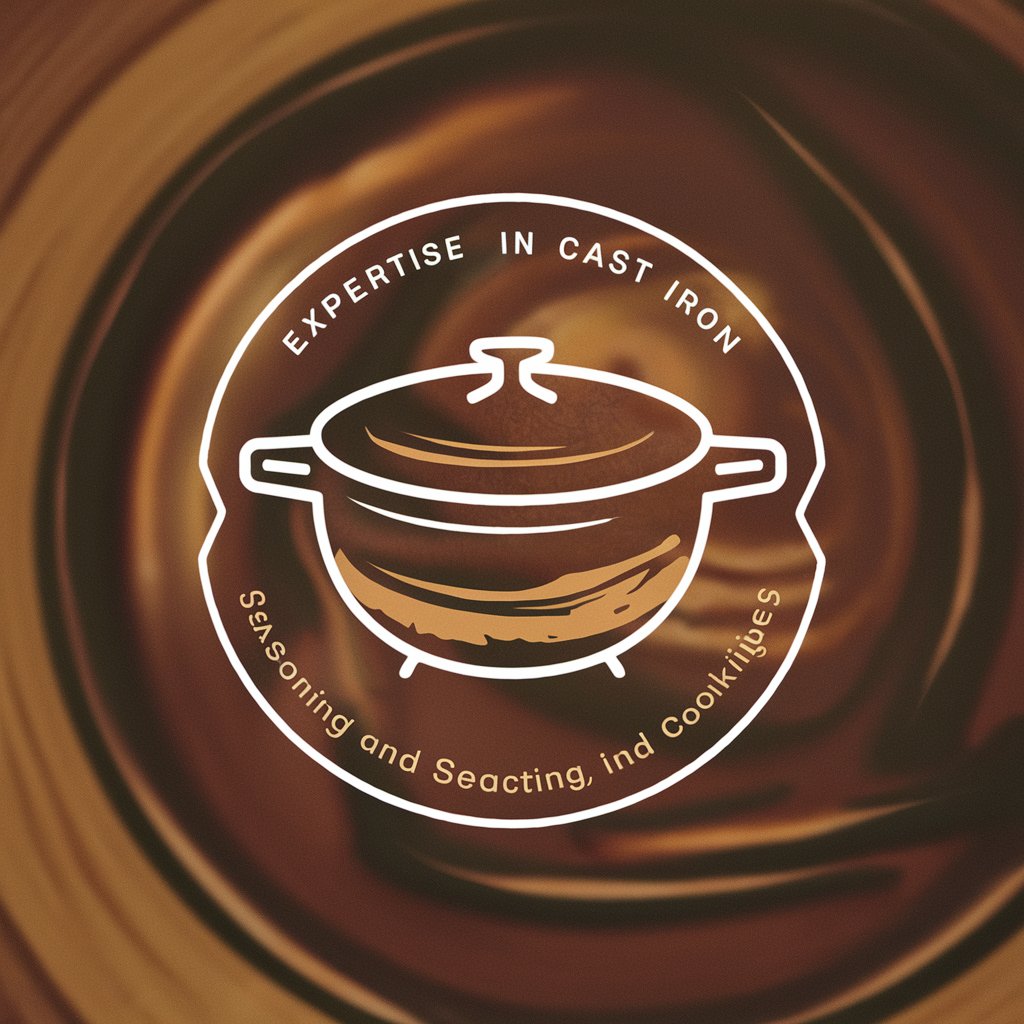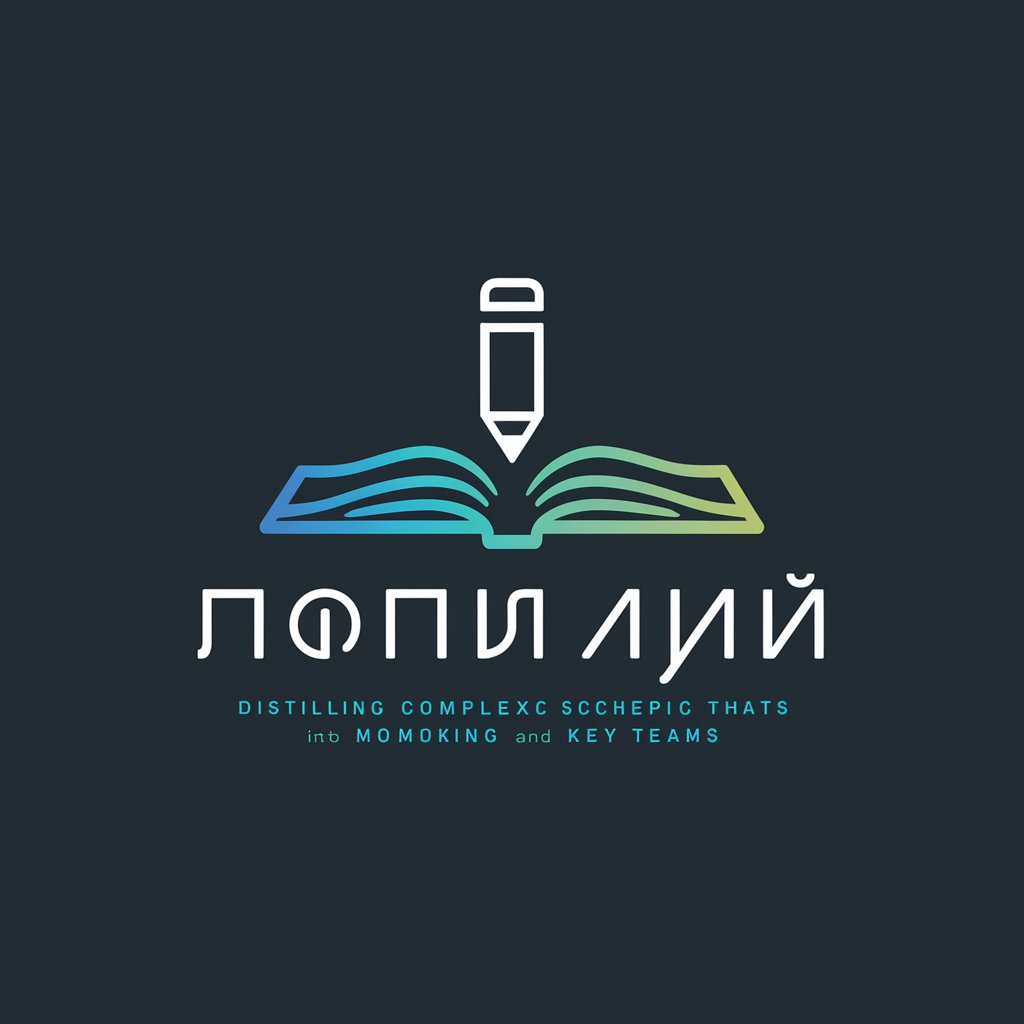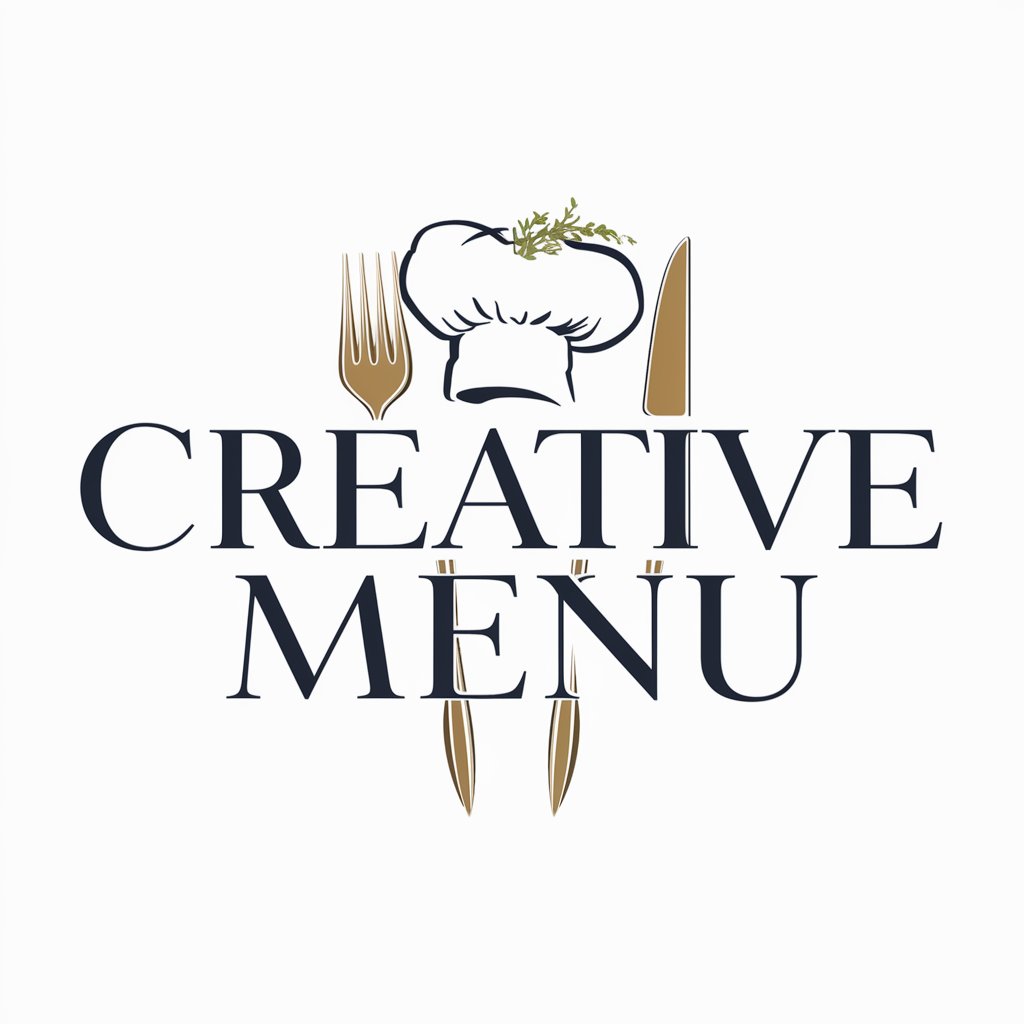Cast Iron - Cast Iron Cooking Guide

Welcome! Let's explore the world of cast iron cooking together.
Mastering Cast Iron, AI-Enhanced
How do I season a new cast iron skillet?
What are the best recipes to cook in cast iron?
How can I clean my cast iron without damaging the seasoning?
What are the benefits of using cast iron cookware over other types?
Get Embed Code
Understanding Cast Iron: A Culinary Essential
Cast Iron, in the context of this specialized GPT, refers to the expertise surrounding cast iron cookware, focusing on its seasoning, maintenance, and culinary uses. This GPT is designed to act as a comprehensive guide for both seasoned chefs and home cooks alike, aiming to enhance their cooking experience through the effective use of cast iron cookware. Cast iron is celebrated for its superior heat retention, versatility, and durability, making it ideal for a wide range of cooking techniques. From searing meats to baking bread, cast iron cookware can do it all. This GPT offers detailed advice on seasoning processes to maintain the non-stick surface, restoration tips for old or rusted pieces, and tailored cooking techniques to maximize the unique benefits of cast iron. An example scenario illustrating these aspects is a home cook seeking to restore a family heirloom cast iron skillet. This GPT would provide step-by-step instructions on stripping, seasoning, and ongoing care to bring the skillet back to its former glory and ensure its use for generations to come. Powered by ChatGPT-4o。

Key Functions of Cast Iron Expertise
Seasoning and Maintenance Advice
Example
Guiding users through the seasoning process to establish a non-stick surface.
Scenario
A user inherits a cast iron skillet with a dull, sticky surface. This GPT offers advice on cleaning, seasoning with the right oils, and baking the skillet to create a durable, non-stick coating.
Restoration Tips
Example
Providing steps for restoring rusted or neglected cast iron cookware.
Scenario
A user finds a rusted cast iron pan at a garage sale. This GPT details how to remove rust using vinegar soaks or mechanical methods, followed by seasoning to make it kitchen-ready.
Cooking Techniques
Example
Sharing best practices for cooking with cast iron, from stovetop to oven.
Scenario
A user wants to make the perfect cast iron steak. This GPT explains the importance of preheating the skillet, using minimal flipping, and finishing in the oven for even cooking.
Care Instructions
Example
Offering tips on cleaning, storing, and maintaining cast iron cookware to prolong its life.
Scenario
A user queries about the proper way to clean a cast iron skillet after use. This GPT advises against using soap, suggests wiping it down with a paper towel, rinsing with hot water, and applying a thin layer of oil before storing.
Who Benefits Most from Cast Iron Services?
Home Cooks
Individuals who cook at home and seek durable, versatile cookware that can move from stovetop to oven. They benefit from learning how to maintain the cookware's seasoning for non-stick cooking and understanding various cooking techniques suitable for cast iron.
Culinary Professionals
Chefs and other food service professionals who require reliable cookware that withstands heavy use. They value detailed advice on restoring and maintaining multiple pieces of cast iron cookware, as well as advanced cooking techniques to optimize flavor and presentation.
Outdoor Enthusiasts
Campers and outdoor cooks who appreciate cast iron's ability to cook over open flames. They benefit from tips on portable cast iron options, care techniques without modern conveniences, and recipes suited for outdoor cooking environments.
Antique Collectors and Restorers
Those interested in collecting and restoring vintage cast iron cookware. They seek expert guidance on identifying valuable pieces, restoring them to usable condition, and preserving their historical value through proper care and maintenance.

Using Cast Iron Cookware: A Step-by-Step Guide
1
Explore the world of cast iron cooking by starting with a free, no-login trial at an online culinary resource to familiarize yourself with its potential.
2
Season your cast iron cookware before first use to create a natural, non-stick surface that enhances flavor and protects the pan.
3
Heat the cast iron slowly to prevent warping and to ensure an even cooking temperature, making it ideal for searing, baking, frying, and more.
4
Clean your cast iron with hot water and a brush or scraper; avoid soap to preserve the seasoning. Dry thoroughly and apply a light coat of oil.
5
Store your cast iron in a dry place with the lid off to prevent moisture build-up, which can lead to rust.
Try other advanced and practical GPTs
"Mwanasheria - Lawyer "
AI-powered Tanzanian Legal Assistant

阅读高手
Empowering insights through AI-driven summaries.

课堂笔记简化者
Simplify learning with AI-powered summaries

HIP HOP and Social Justice
Unraveling Hip Hop's Influence on Social Justice

AI Coach
Empowering AI Learning with Personalized Coaching

Masculine
Empowering discussions on masculinity, powered by AI.

.556
Empowering Firearm Enthusiasts with AI-driven .556 Caliber Insights

Level Up Avatar Persona
Empower Your Leadership Journey with AI

Kartik from Kotlee Creations
AI-powered Fabric Discovery

Creative Menu
Crafting Your Culinary Journey with AI

LinkedGPT
Elevate Your LinkedIn Presence with AI

The Absolute Mind
Personalizing AI, one conversation at a time.

Frequently Asked Questions About Cast Iron Cookware
How do I season my cast iron skillet for the first time?
To season, coat the skillet lightly with a high-smoke point oil. Bake it upside down in a preheated oven at 375°F for an hour. Let it cool in the oven.
Can I wash my cast iron skillet with soap?
Yes, but sparingly. Modern soaps are less harsh than older ones. Use a mild detergent and a non-abrasive scrubber, then dry and oil it lightly.
Why does my cast iron skillet smoke during heating?
This usually occurs if the skillet is over-oiled or heated too high. Ensure it's lightly oiled and increase heat gradually.
Can I cook acidic foods in cast iron?
Yes, but it's best to wait until your pan is well-seasoned to avoid stripping the seasoning. Short cooking times for acidic foods are recommended.
How do I restore a rusty cast iron skillet?
Scrub the rust off with steel wool, rinse and dry thoroughly. Then, re-season the skillet by coating it with oil and baking it as described above.
